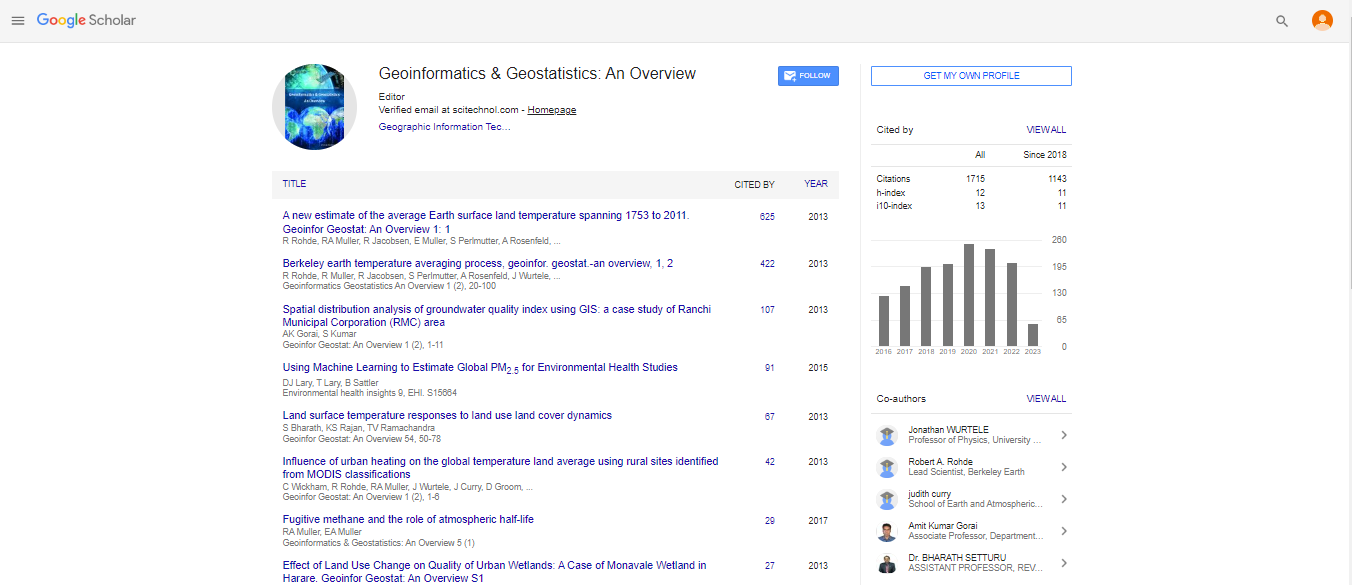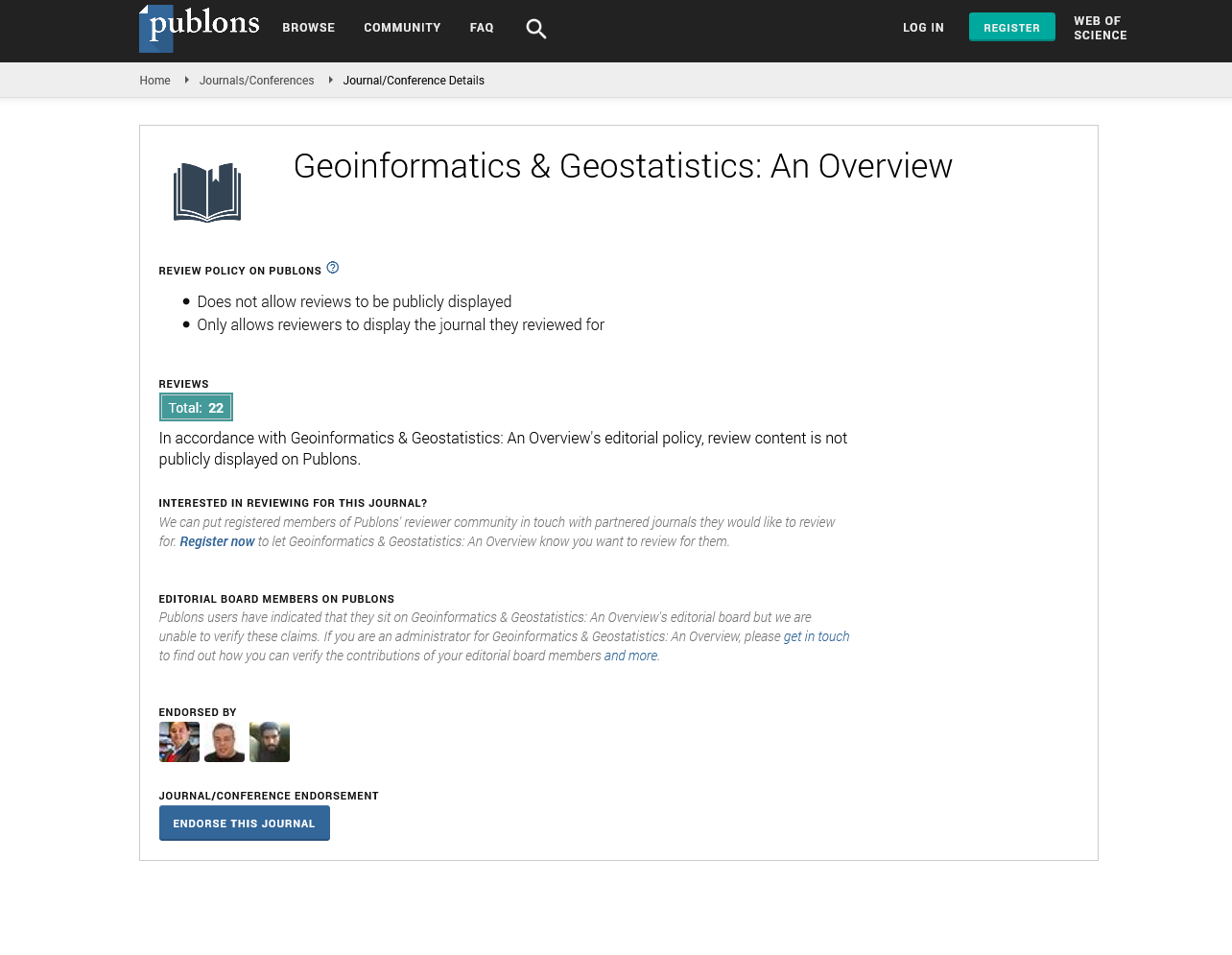Short Communication, Geoinfor Geostat An Overview Vol: 13 Issue: 3
Advancing Climate-Smart Aquaculture in Tanzania’s Lake Zone
Christopher N Mdoe*
Institute of Rural Development Planning-Lake Zone Centre, Mwanza, Tanzania
*Corresponding Author: Christopher N Mdoe
Institute of Rural Development Planning-Lake Zone Centre, Mwanza, Tanzania
E-mail: cmdoe@irdp.ac.tz
Received date: 06 May, 2025, Manuscript No. GIGS-25-165210; Editor assigned date: 08 May, 2025, PreQC No. GIGS-25-165210 (PQ); Reviewed date: 22 May, 2025, QC No. GIGS-25-165210; Revised date: 25 May, 2025, Manuscript No. GIGS-25-165210 (R); Published date: 03 June, 2025, DOI: 10.4172/2327-4581.1000436
Citation: Mdoe CN (2025) Advancing Climate-Smart Aquaculture in Tanzania’s Lake Zone. Geoinfor Geostat: An Overview 13:3.
Introduction
Aquaculture is increasingly recognized as a key sector for ensuring global food security, improving livelihoods, and promoting economic development, particularly in low and middle-income countries. However, climate change has introduced new challenges, including rising temperatures, unpredictable rainfall, and extreme weather events, which threaten aquaculture productivity and sustainability. Climate-Smart Aquaculture (CSAq) has emerged as an adaptive strategy to address these challenges by integrating climate resilience, resource efficiency, and environmental sustainability into aquaculture practices [1,2].
The study “Mapping suitability for climate-smart aquaculture: Geospatial characterization in Tanzania's Lake zone” applied geospatial tools to guide the sustainable development of aquaculture in the Lake Zone regions of Tanzania, focusing on Mwanza and Mara [3]. This mini-review highlights the key findings, significance, and future directions of that research.
The study evaluated the land suitability for CSAq practices in Tanzania’s Lake Zone, a region highly dependent on fisheries and aquaculture for food and income. Despite its potential, aquaculture in this region faces challenges such as limited climate-smart technologies, inadequate spatial data, and climate variability [4]. To address these gaps, the Analytic Hierarchy Process (AHP) and Geographic Information Systems (GIS) were applied to assess the suitability of land for aquaculture activities.
Five critical environmental variables were analyzed: elevation, soil type, temperature, Land Use/Land Cover (LULC), and slope. Using AHP, weights were assigned to each factor based on their importance, with LULC (42.6%) and elevation (26.7%) emerging as the most influential. These weighted variables were integrated using GIS to generate suitability maps for CSAq across the Mwanza and Mara regions.
The results revealed significant regional differences. In Mara, 35% of the land was classified as “most suitable” and 50% as “suitable,” while in Mwanza, only 15% was “most suitable,” with 60% “suitable” [3]. Factors such as lower elevation, clay soils, and vegetated LULC made Mara particularly favorable for pond-based aquaculture. In contrast, Mwanza’s urbanization and higher temperatures constrained its suitability, though it still offered substantial potential for development.
Field validation confirmed that areas classified as highly suitable corresponded to thriving aquaculture sites. These findings provide policymakers and stakeholders with crucial guidance on where to prioritize investments, infrastructure, and training for CSAq.
Significance and impact
The integration of geospatial tools and multi-criteria decision analysis represents a powerful approach for planning climate-smart aquaculture. By mapping environmental suitability, the study contributes to evidence-based decision-making that can help optimize land use, minimize environmental impacts, and improve productivity. For Tanzania, where the demand for fish protein is rising alongside rapid population growth, CSAq offers a pathway to enhance food security, reduce poverty, and strengthen climate resilience [5,6]. The results are particularly relevant for government agencies, development organizations, and private investors seeking to expand aquaculture in ways that align with sustainability and climate adaptation goals.
Beyond the national context, the study supports global efforts to achieve the United Nations Sustainable Development Goals (SDGs), particularly SDG 1 (No Poverty), SDG 2 (Zero Hunger), SDG 13 (Climate Action), and SDG 14 (Life Below Water). Demonstrating how GIS-based suitability mapping can inform aquaculture development provides a model adaptable to other regions facing similar environmental and socioeconomic challenges [7,8].
Reflections and future directions
While the study made significant advances, several limitations and opportunities for further research remain. First, the analysis focused primarily on biophysical factors, excluding critical socio-economic variables such as market access, infrastructure, community preferences, and institutional capacity. Future studies should integrate these dimensions to provide a more holistic assessment of aquaculture potential [2].
Second, the suitability maps represent a snapshot in time. Given the accelerating impacts of climate change, there is a need for dynamic, longitudinal studies that track changes in land suitability and system performance over time. This will enable stakeholders to adjust management practices and investments proactively [4].
Third, expanding the scope of CSAq beyond ponds for example, integrating cage farming and rice-fish systems would allow a broader understanding of climate-smart strategies tailored to different ecosystems and farming contexts. It is also recommended to explore the use of climate-resilient fish species, improved pond designs, and innovative water management techniques to enhance adaptive capacity [9].
Conclusion
Climate-smart aquaculture presents a transformative opportunity to promote food security, economic growth, and environmental sustainability in Tanzania’s Lake Zone. By leveraging geospatial tools, a foundation has been laid for site-specific, data-driven interventions that can help build resilience in the face of climate change. Moving forward, collaborative efforts that integrate environmental, economic, and social considerations will be essential to scaling up CSAq and realizing its full benefits for communities across Tanzania and similar regions.
References
- FAO (2021) Fisheries and Aquaculture Circular.
- Gephart JA, Golden CD, Asche F, Belton B, Brugere C, et al (2020) Scenarios for global aquaculture and its role in human nutrition. Rev Fish Sci Aquacul 29(1):122-38.
- Mdoe CN, Ngowi EE, Mahonge CP (2025) Mapping suitability for climate-smart aquaculture: Geospatial characterization in Tanzania's Lake zone. Geomatica 77(1):100046.
- Berg H, Mulokozi D, Udikas L. A GIS assessment of the suitability of tilapia and Clarias pond farming in Tanzania. ISPRS Int J Geo Inf 10(5):354.
- FAO (2022) Food Security and Nutrition in the World.
- IPCC (2023) Summary for Policymakers: Synthesis Report.
- Assefa WW, Abebe WB (2018) GIS modeling of potentially suitable sites for aquaculture development in the Lake Tana basin, Northwest Ethiopia. Agricul Food Security 7:1-5.
- Falconer L, Telfer TC, Ross LG (2016) Investigation of a novel approach for aquaculture site selection. J Envi Manag 181:791-804.
- Emam W, Bakr ME, Abdel KMF, Abdel RMM, Elhetawy AI, et al. Modifying the design of pond production systems can improve the health and welfare of farmed Nile tilapia, Oreochromis niloticus. Pak J Zool 56(4): 1917–1922.
 Spanish
Spanish  Chinese
Chinese  Russian
Russian  German
German  French
French  Japanese
Japanese  Portuguese
Portuguese  Hindi
Hindi 
